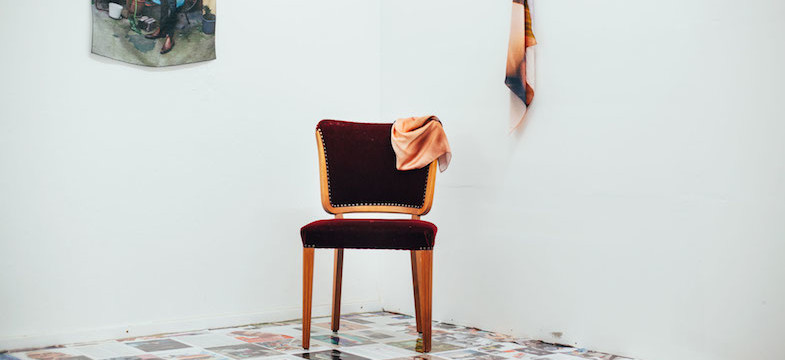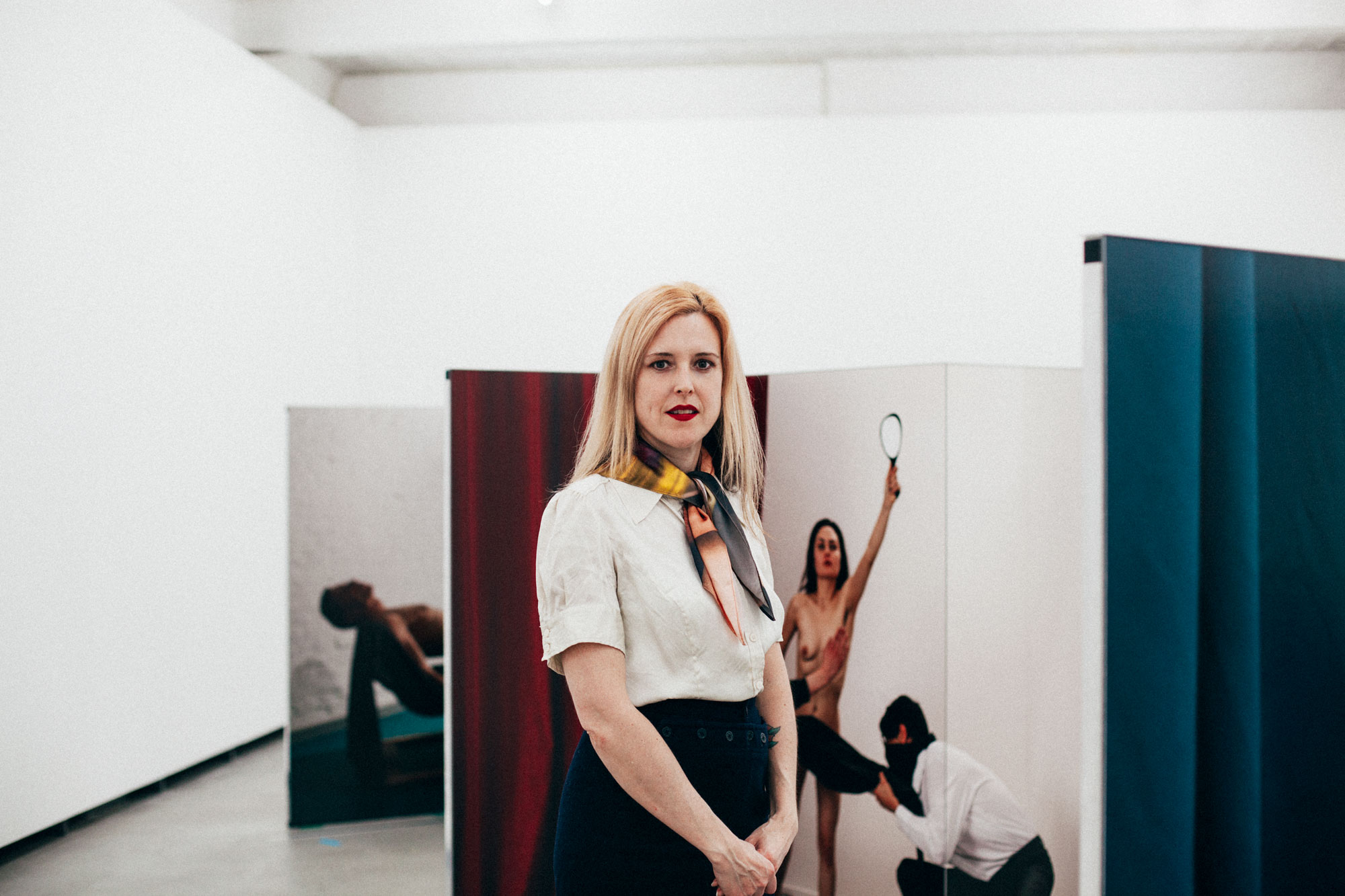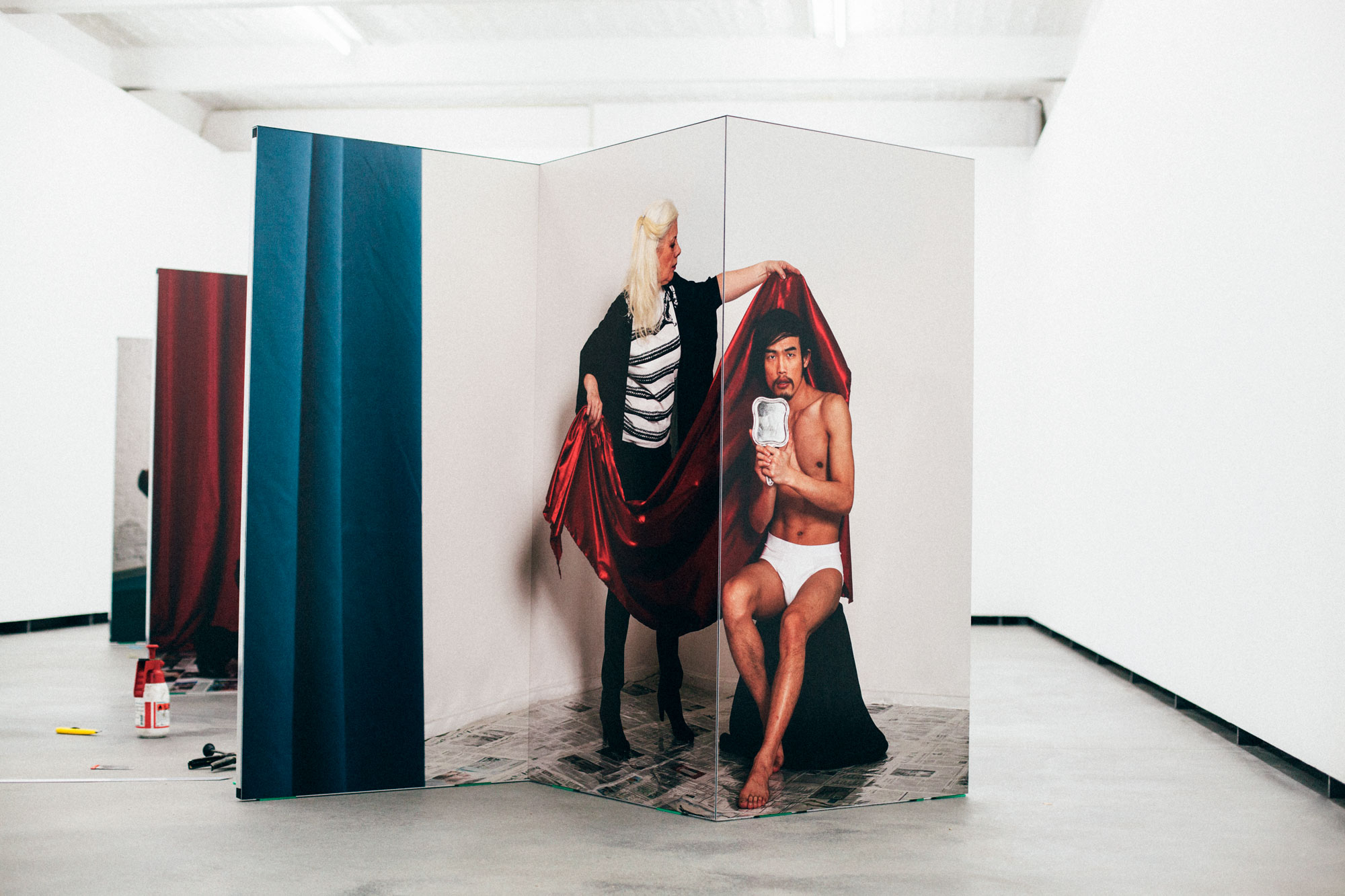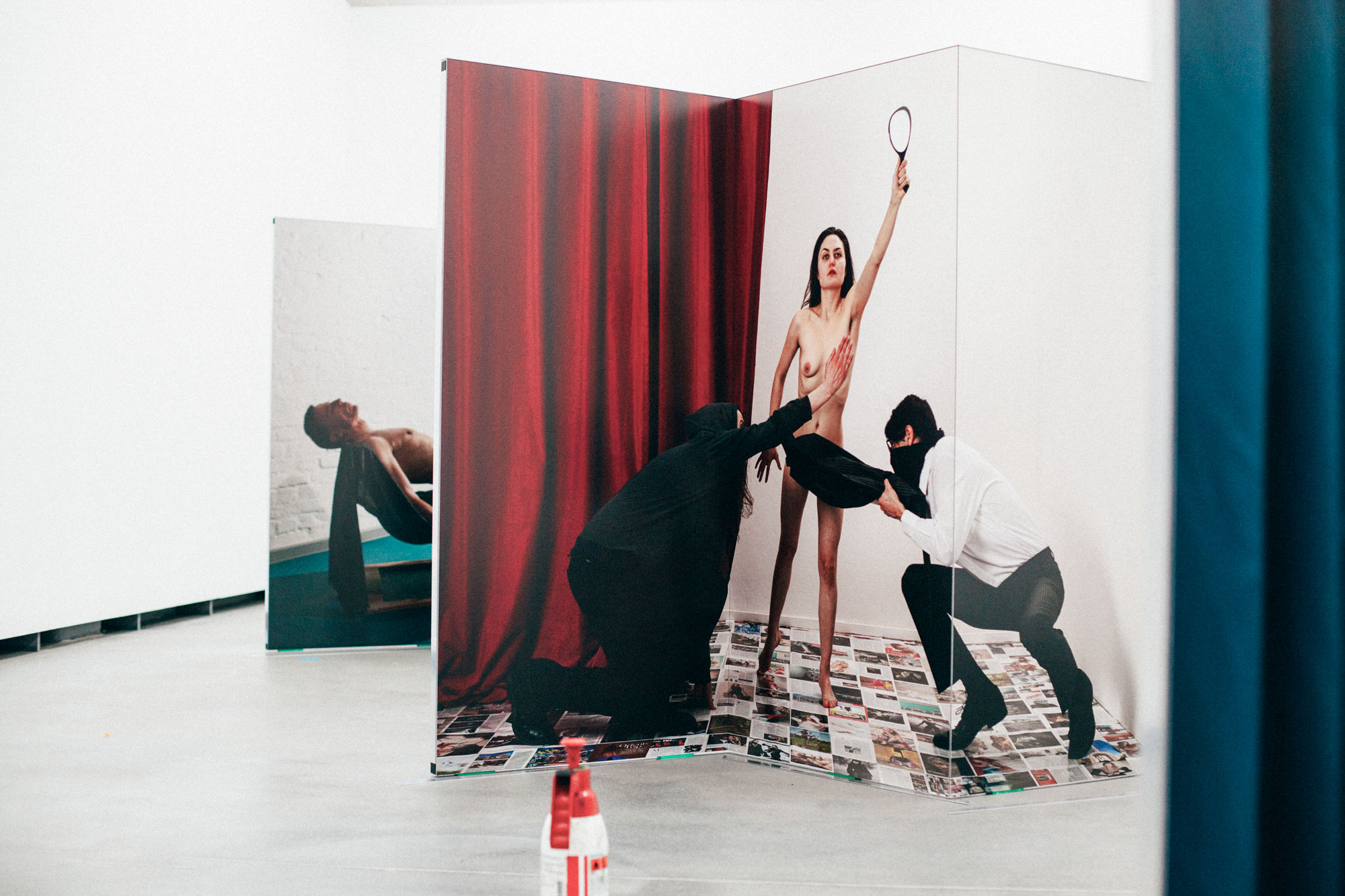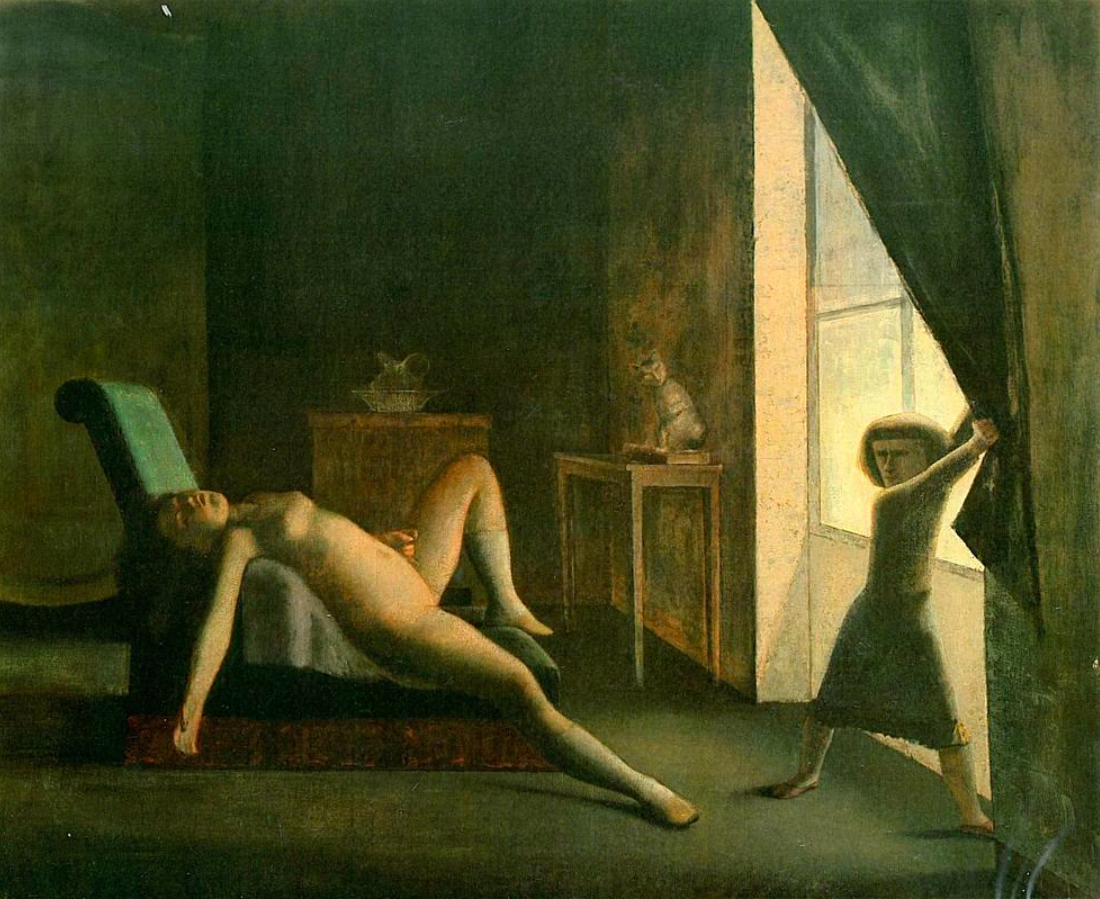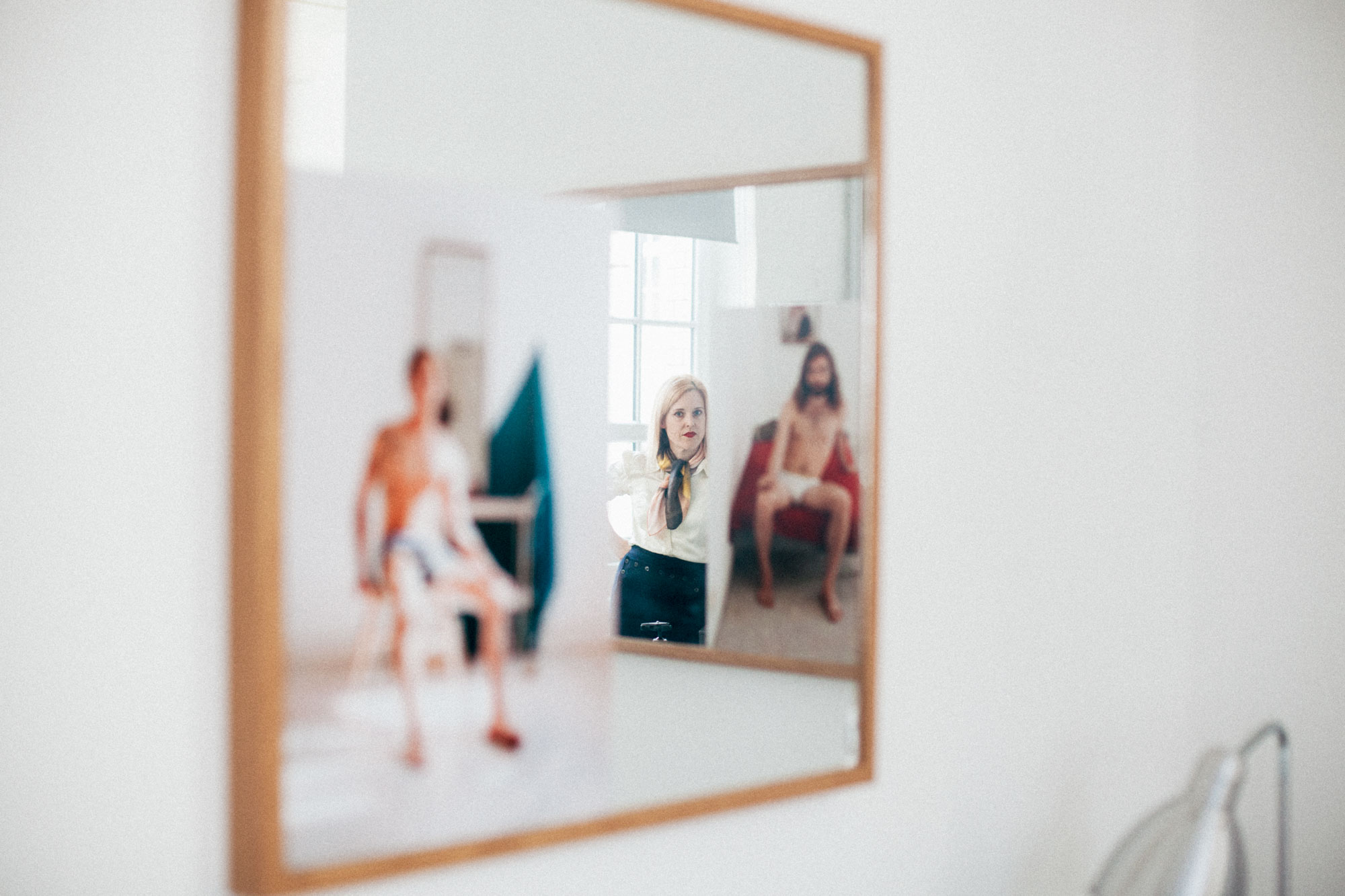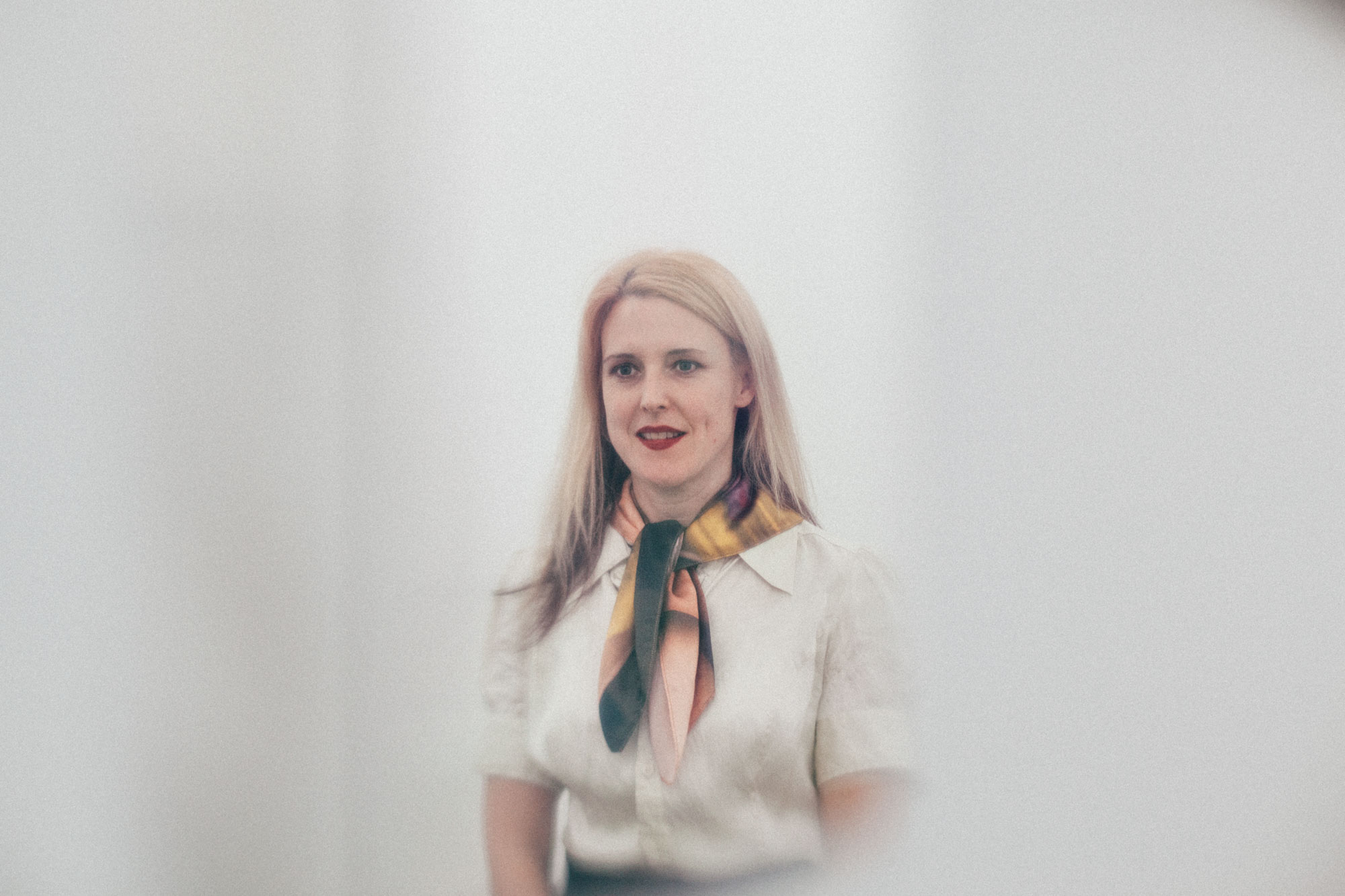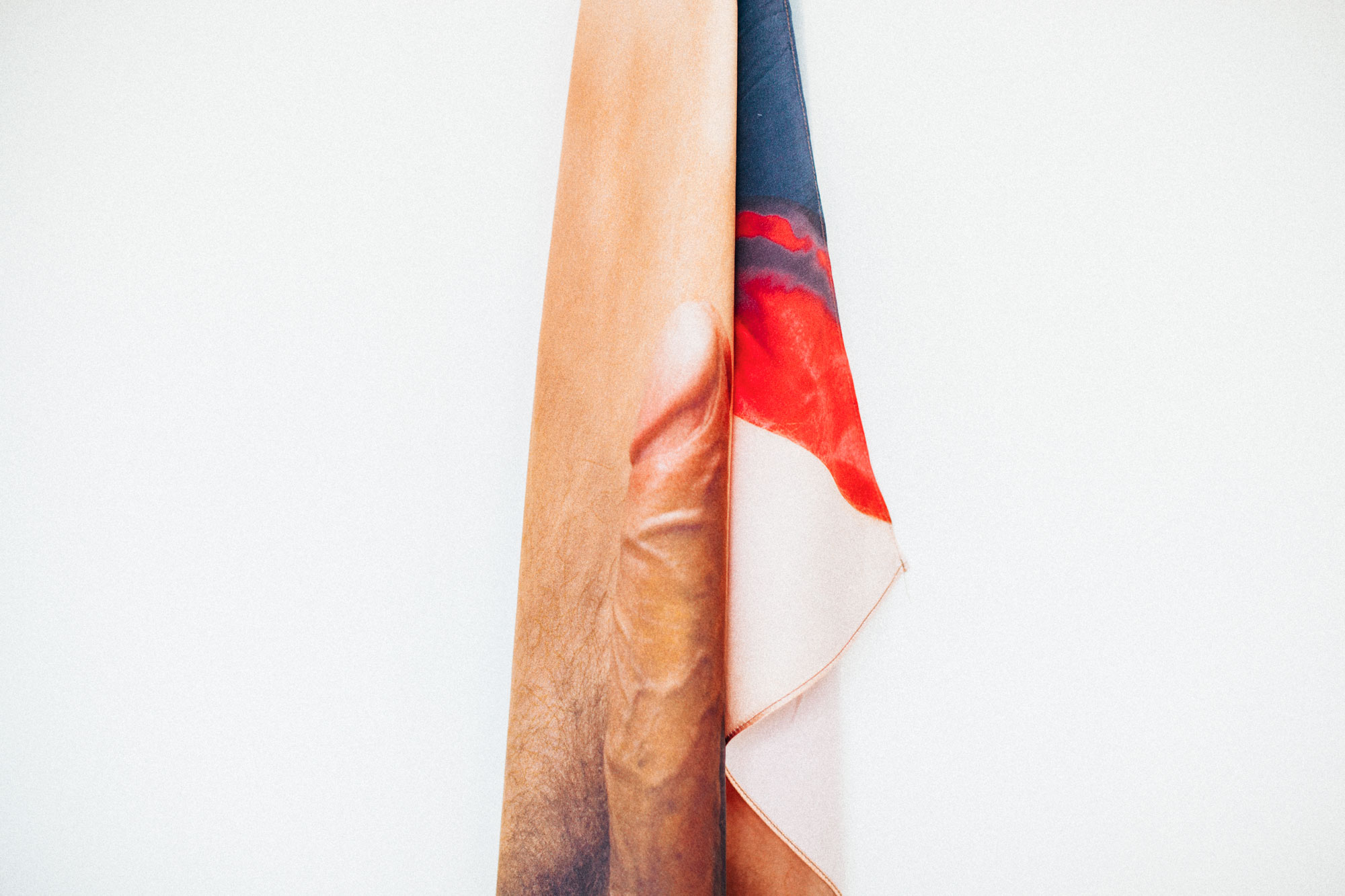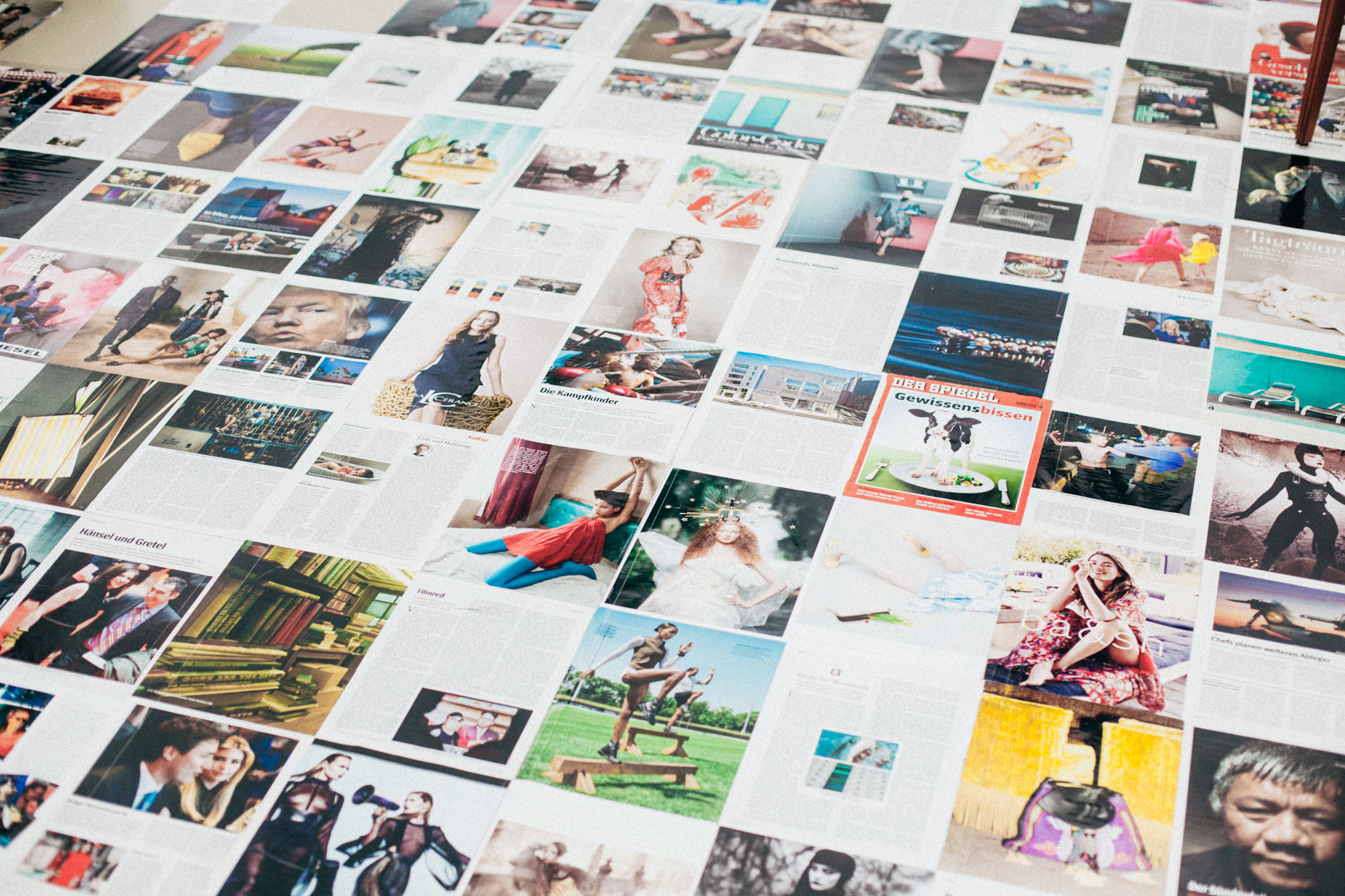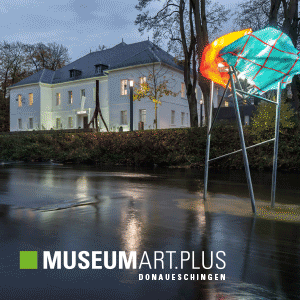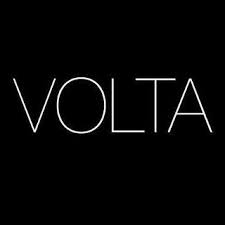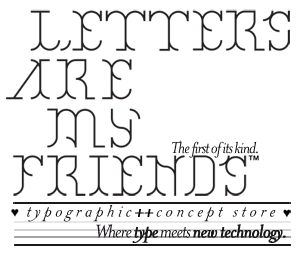Dodging sculptures, monumental paintings, construction workers and their whizzing and whirring tools, we stepped through the fruits of the labour of the artists in residence, towards Walker’s installation. For one year now she has had the opportunity to work and live in a studio space in Kreuzberg, though she has been living in Berlin on and off since she first came to post-wall Berlin in 1996, a time when the art scene was reconquering the bleak dilapidated centre of town and the cultural vortex left behind by decades of artistic oppression and economic hardship. The collision of these two Berlins created a seductive blank canvas for young artists to work and experiment on, free from the institutional structures yet to be established.
Even at minus 13 degrees – I loved it immediately!
But 20 years later, within institutional structures Lyndal Walker also thrives:
While I like to make work that can exist in other contexts, like my silk scarves that can be worn, galleries are places for contemplation and experimentation so we can question fundamental things like identity and gender in these spaces, isolated from all the other visual chatter. The visual arts are a great space to take apart and rebuild the images that we might experience through the media, from our personal lives or art history.
References to art history are frequent within her older works and the ones being constructed before us. The room filling installation compromises three folded screens, like the ones you would get dressed behind, with a staged photograph in front and mirrors at the back. Introducing her work she explains:
So this is the first time I’ve actually done something with an interior design element that relates to the performativity of dressing and the idea of transformation. We transform ourselves in these private spaces, but hide ourselves as well. Dressing and undressing, hidden and exposed truths are topics I was interested in.
Each of the photographs is based on either a specific painting or common genres of allegories from the 18th through to the 20th century. In the first photograph the artist has appropriated personifications of truth and time, commonly portrayed as an old man, representing time, uncovering a young virgin representing the untarnished truth. In Walker’s photograph however the gender roles are reversed: An mature lady whips a drape away covering a young male model.
“And then the next one is truth being covered up. Its based on an image of the personification of truth escaping her well to expose mankind.”, Walker explains while wandering through the installation. In this photograph the female figure representing truth tramples across a floor plastered with press clippings, only to be hindered by two male men who desperately fling their suit or hand before her naked breasts and genitalia, thus hiding her. In the last photograph again truth is being uncovered and exposed to the world through an open window. It is based on a Balthus painting, “but in his version he uses young girls, which are laying on the chair, maybe in sexual ecstasy, or maybe dead.. And the other figure is exposing her”. In Walkers photograph she has replaced the girl with a transgender person. She thereby comments on the male-gaze of art history, exposing through the viewers awkwardness at seeing nude men and transgenders portrayed this way, the absurdity of gender stereotypes.
“How do you think the viewer will read the work?”, I ask inspired by this thought.
I’m not sure… People have said things like: “Oh, thats a sexy image.” And for me they’re not! I have clothed people and unclothed people in my work (shrugging). Thats not what its about.
I like making images that aren’t so easily digested, with complex narratives and contradictions, where I know some people will make certain assumptions and others will make completely different assumptions. I don’t like the idea or message to be immediately apparent, more like an unravelling riddle. I do want the message to come across, but I think as I’ve grown older I’ve become less controlling of how people interpret my work.
Taking us up into the her studio, a place she has described as “a place of creation but also of artifice”, she shows us where the photographs downstairs were staged. Everywhere you look you can see Walker’s previous works, works which form the basis of her current work. Everywhere we looked we could also see ourselves – reflected in the multiple mirrors the artist used to frame her works. She uses them, not just as a symbol of truth and literally reflection, but also to turn around our expectations of seeing and being seen in turn.
I was also doing a lot of research on narcissism, but then also getting sidetracked by reading things on Trump, while I should have sat down to read a book and go nowhere near the internet
“Well Trump is good research material for narcissism…“, I point out, „What else were you researching?“
I researched paintings a lot, for example I was reading a lot about Fragonard, the 18th century painter. I also researched about the act of dressing and undressing. For this I looked at erotica and porn – which I’ve never really looked at that much for my work, but that was really interesting.
Porn: Another traditionally male visual language, another genre for Lyndal Walker to deconstruct. Swung elegantly around her neck and hung along the walls of her studio space are light silk scarves behind which we suspect an abstract pattern of nude and pastel colours. Very elegant. Only… not quite: Unravelling it from her neck, the artist presents the photograph of an erect, larger than life penis printed onto the scarf.
Part of what attracts me to any given medium is its unexpected connections to other things or ways I can subvert its nature. So the scarves, which are associated with modesty and style, are adorned with images more closely associated to internet porn and sexting.
I really like using images and putting them into a new context – on a wall they’re so pristine. With the scarves you can wear them, sweat on them, crush them up. Bodily and tactile.
Thus she not just takes art historical references and visual narratives apart, but also examines materiality for their inherent gender stereotypes. Icing, for example, is reminiscent of stay-at-home moms and thus of traditional gender roles and servility. Together with the Hotham Street Ladies, an artists collective Lyndal Walker is a founding member of, they have used this sweet material for their sculptures. However they aren’t content to simply decorate cakes with swirls and sugar roses; the HSL, their street-gang abbreviation, instead pipe bleeding uterusses, messy kitchens or penises with icing.
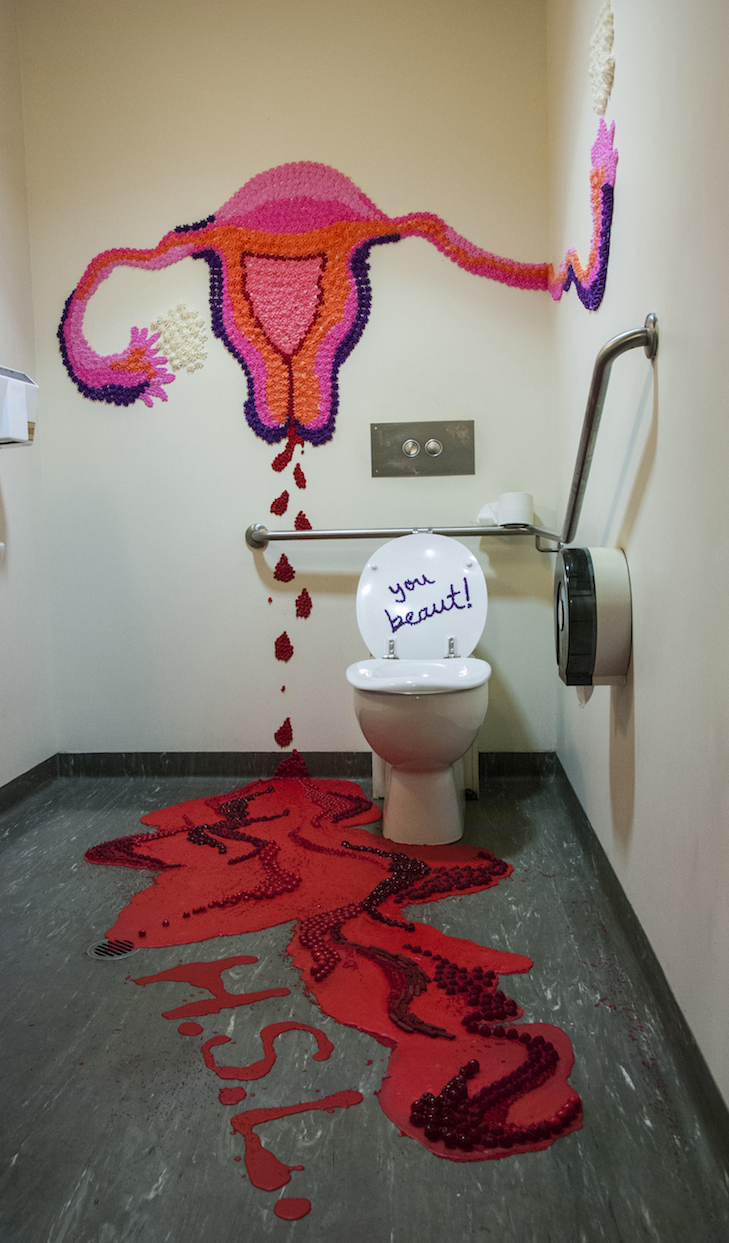
You Beaut’, The Hotham Street Ladies, 2013, Victorian College of the Arts Toilets, made from butter cream icing.
Food is also a feminist issue relating to body image and inequal labor. We represent some of the more abject aspects of women’s lives like dirty dishes and menstruation. Instead of a cake to celebrate a child’s birthday or Christmas, we put the focus back on actual women and their experience.
And food politics aren’t the only manifestation of gender inequality in Walker’s work:
I mean, there are great things about cake decorating as well as about fashion. In my solo practice I’ve often explored fashion, which I have an ambivalent relationship with. I find it fascinating and personally get great joy out of clothing but in terms of issues like overconsumption, body image and exploitation of workers, fashion is reprehensible.
Uncovering the hidden truths about fashion, food and art history, Lyndal Walker holds up a mirror to society and its cultural heritage. One in which we may see the culmination of our own narcissism, power relations and the ambivalence of fun things like shopping, cakes and porn.
Changing Room | Lyndal Walker
OPENING 13.04.2017 | 7 pm
EXHIBITION 13.04. – 07.05.2017, 2 pm – 7 pm (closed on mondays)
Künstlerhaus Bethanien | Kottbusser Str. 10 | 10999 Berlin
http://www.bethanien.de
photo credit: Kathrin Leisch
Author: Anna Simon-Stickley

